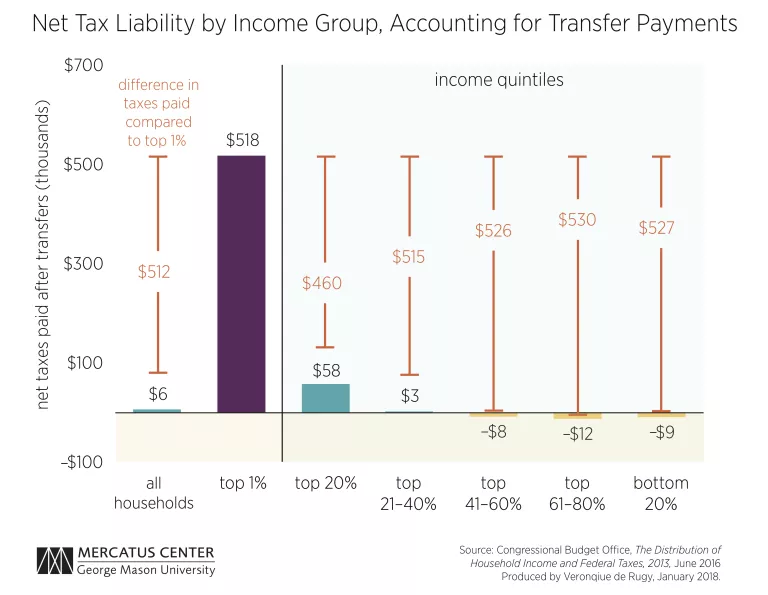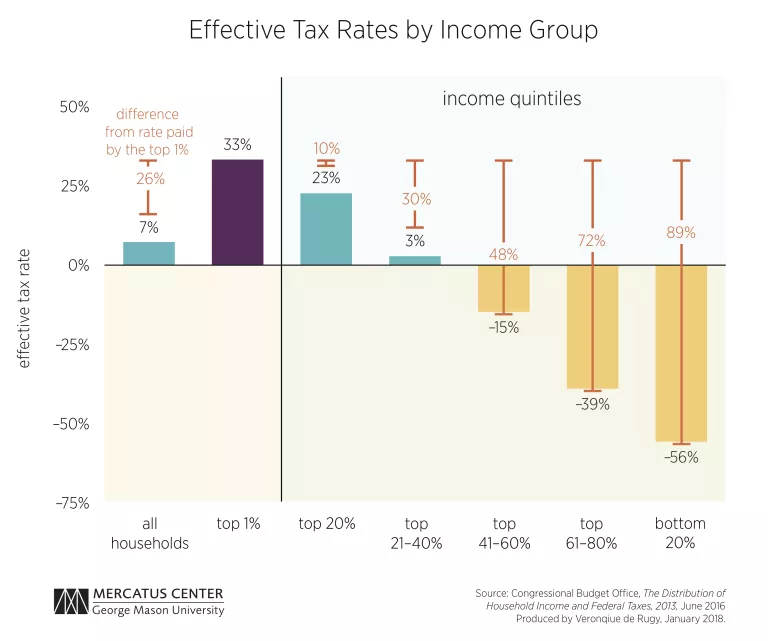- | Government Spending Government Spending
- | Data Visualizations Data Visualizations
- |
The Federal Tax System Is More Progressive Than You Think
The vast majority of federal taxes (income, payroll, corporate, and excise) are paid by high earners in America. In 2013, the average tax liability of a household in the top 1 percent was more than 25 times that of the average American household ($534,000 vs. $20,000), though the top 1 percent earned less than 16 times as much before-tax income as the average household (approximately $1.6 million vs. $100,200). However, taking into account not only federal tax burdens, but also the benefits households receive in the form of transfers of both cash and in-kind benefits, this disparity becomes even more pronounced: there is an effective tax liability of $518,290 for the top 1 percent, while the average household paid $6,200 (lower-income households disproportionately benefit from transfers). This means the top 1 percent paid 84 times as much as the average household in federal income taxes in 2013.



